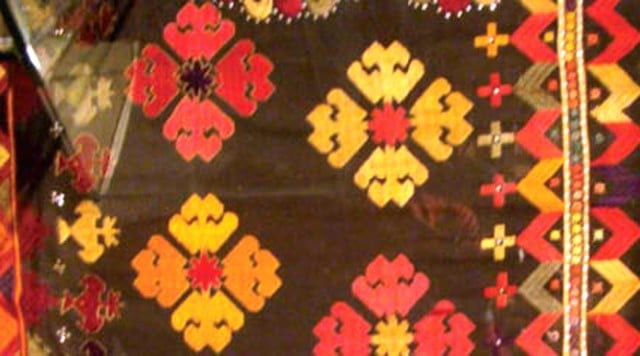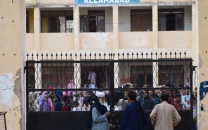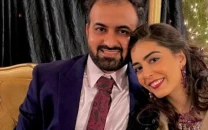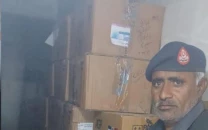Weaving heritage back from the past
Heritage Foundation, a non-profit organisation, is holding an exhibition displaying work made by internally displaced people.

Lari, the head of the Heritage Foundation (HF), a non-profit organisation, is holding an exhibition displaying work made by internally displaced persons (IDP) at the Lok Visa gallery in Islamabad. The handmade Swati items will be displayed there from June 19 to June 21. Exhibitions will later be held in Karachi and Peshawar as well.
“The victims of any war or national calamity need constant support and rehabilitation along with immediate relief efforts,” Lari told The Express Tribune, adding that this was the reason she was holding the first exhibition in the capital city of Pakistan. The government needs to realise the needs of the IDPs, she added.
Last year, Lari visited the IDP camps in Mardan. All she saw was estrangement in the pale eyes of the immigrants, she said, which led her to begin to think of ways to help the displaced people, especially the women and children at the camps.
Displaced by a military operation in their region at the time, the women and children arrived in the camps to have their lives confined within the thin walls of tents. While men still had the luxury of stepping out and looking around for jobs or just spending time with other refugees, most of the women would spend all day within a very small space. The children too had no schools or toys or sports to help them pass the time.
Lari visited the Sheikh Shahzad camp in Mardan again the same year. She realised that many of the IDPs living in the camps did not even have access to basic amenities such as toilets and kitchens. She then got busy organising teams that constructed community kitchens for the IDPs. The kitchens were made of mud and bamboo sticks.
During her visit, Lari observed that many of the women there had exceptional embroidery skills. This, she felt, could help the women earn money and empower them to an extent.
Early this year, Lari with a group of four people from the HF visited Swat.
Marvi Mazher, one of the group members, said that despite their forlorn surroundings, the IDPs seemed like a different people altogether with an air of royalty about them. “Their rich culture could be discerned even in their shabby conditions,” she said.
The “Revival of Women’s Livelihood in Swat” project formally started with the funding of Unesco on February 17, when the women moved back to Swat. It involved formal training that taught women how to make scarves, key-chains and other small accessories by using traditional material. They used embroidery patterns of beads, threads and sequins, also a local technique.
“When we started the project, the response by the women was extraordinary and most of them came forward, even those who did not know how to embroider,” said Lari. The HF team established 12 centres for training 500 women from six union areas of Islampur, Saidu Shareef, Mingora, Landikus, Barikot, and Shamozai.
One of the most important objectives of the group was to find out the crafts of the locals that needed to be revived.
“We found out that the special khaddi production of Islampur was a lost art and even the women of other areas were copying commercial designs from Lahore instead of their much in demand heritage artworks,” said Marvi. She said that they motivated the women to use their own designs. They also tried to revive minor crafts such as basketry, pottery, doll-making and gem craft.
“We gave 110 personal handlooms to women in the area of Islampur so that they could make the products independently,” Lari said, adding that the experience helped boost the women’s confidence greatly.
Reema, a resident of Swat, now has her own bank account. “Now I can even send my products to Murree and Punjab,” she said happily.
Published in The Express Tribune, June 19th, 2010.



















COMMENTS
Comments are moderated and generally will be posted if they are on-topic and not abusive.
For more information, please see our Comments FAQ